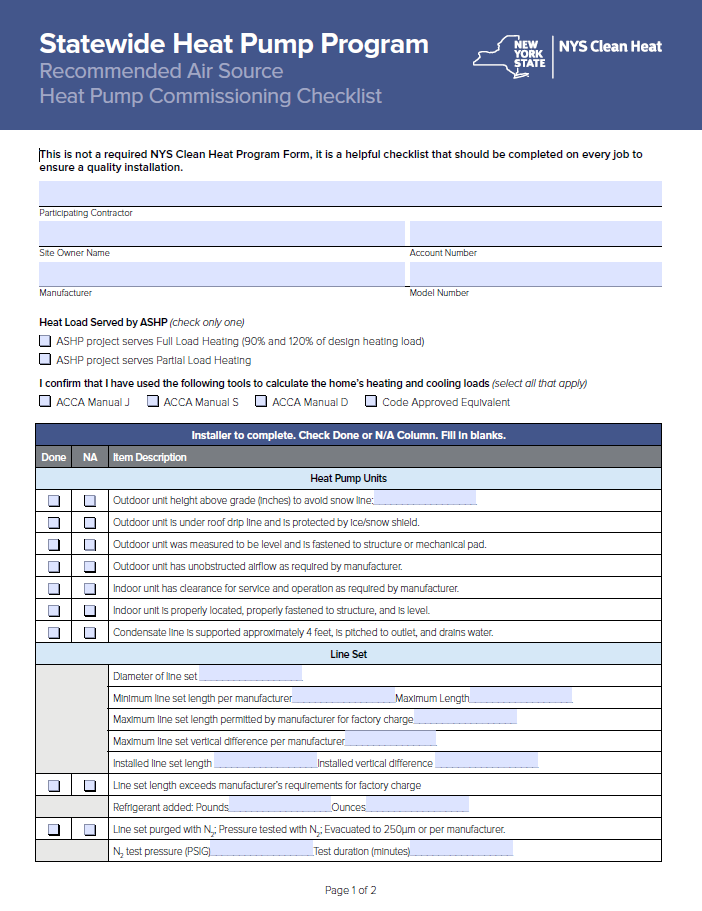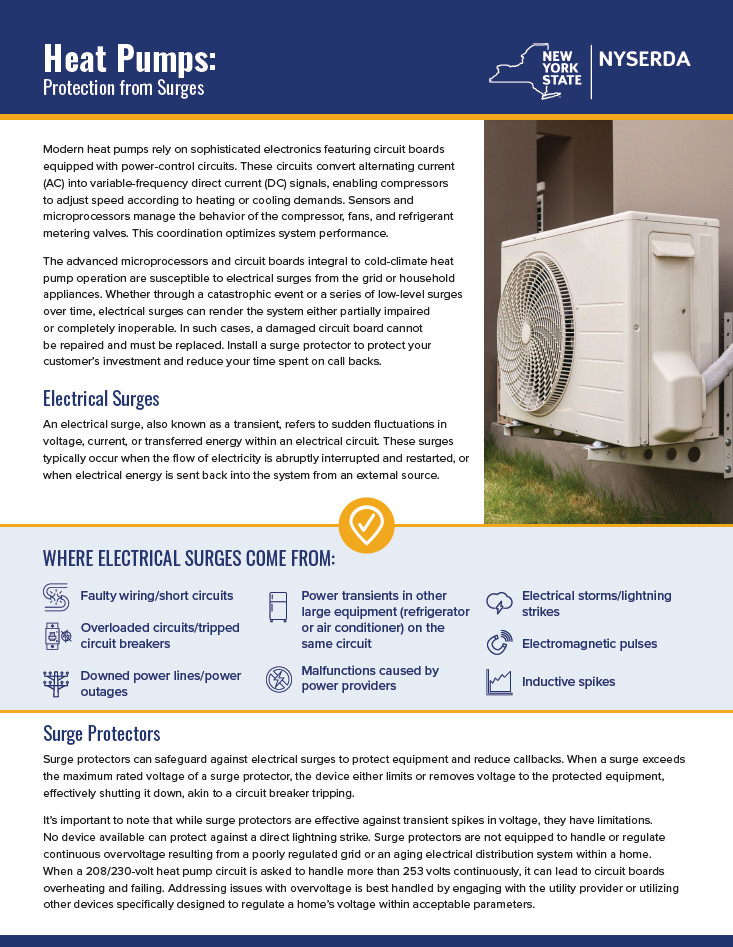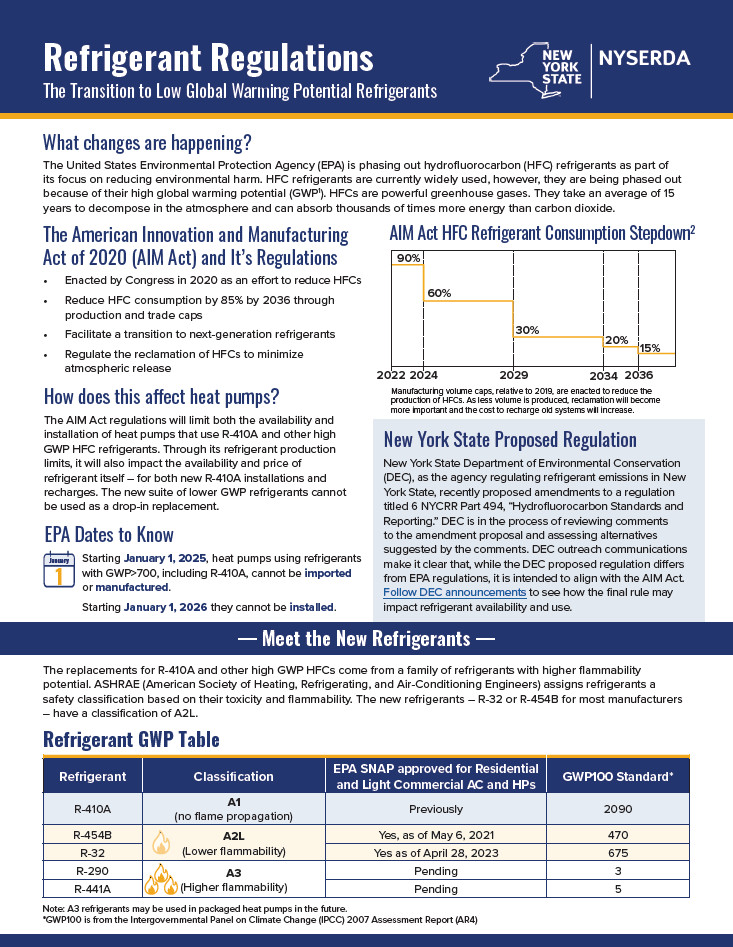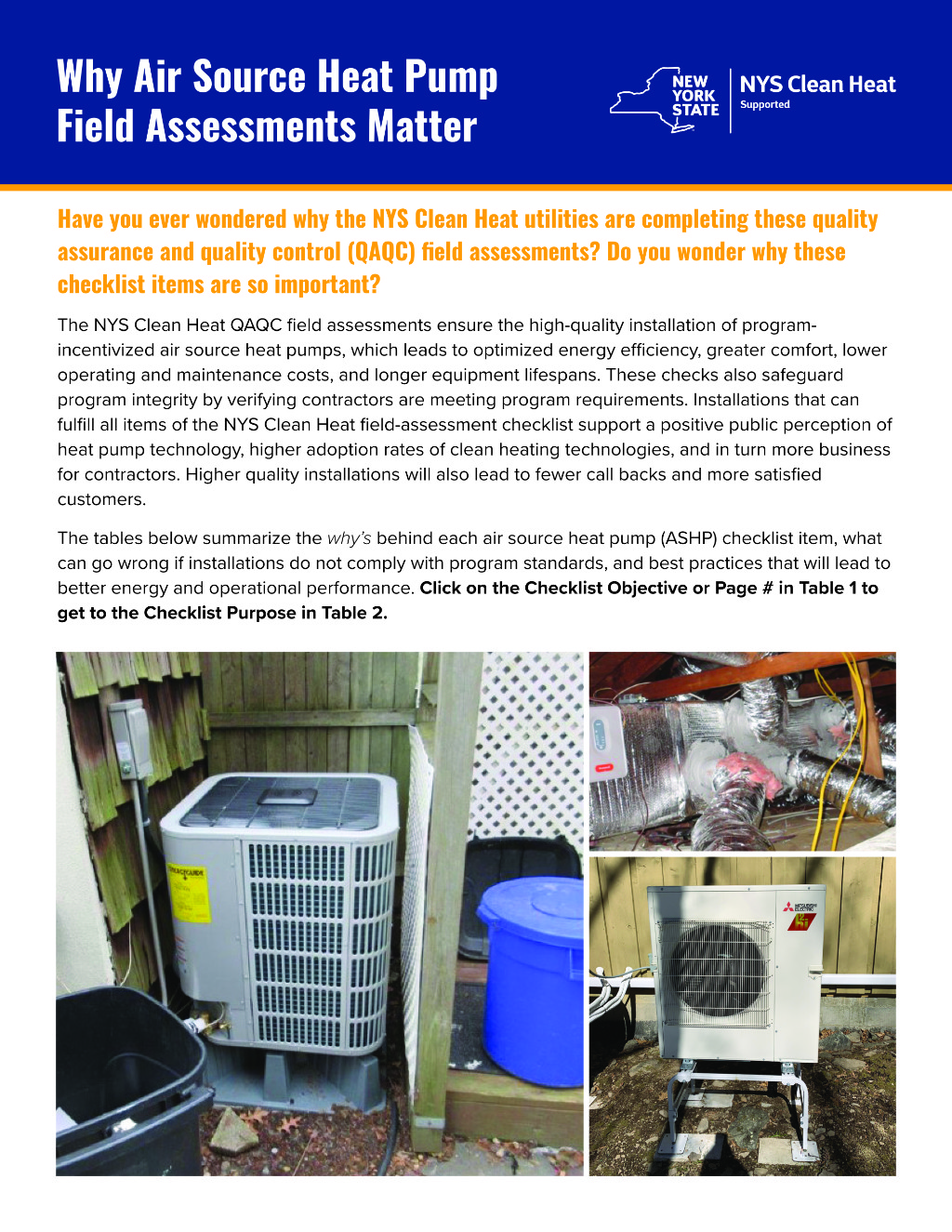Installation Materials
Helpful advice and field resources for successful heat pump installations.
Properly completed installations are key to system performance and customer satisfaction. Learn the best techniques for a quality heat pump installation, with topics including flare fitting, refrigerant use, cold-climate considerations, and more.
NEEP — Installing Air Source Heat Pumps in Cold Climates Guide
Following these installation practices can be the difference between a quality installation and an unnecessary callback.
NEEP — Installing Air Source Heat Pumps in Cold Climates Guide
This guide provides a list of minimum requirements and best practices, as well as homeowner education and system setup guidance, to help ensure efficient air source heat pumps and happy customers in cold climates.
Commissioning Checklist
This checklist is a handy guide for worksite crews to ensure a quality heat pump installation.
Protection from Electrical Surges
Learn the basics of electrical surges and how to install surge protection equipment for heat pumps.
Protection from Electrical Surges
Save time and money with reduced callbacks by installing surge protection on your customer’s new heat pump investment. The Heat Pump: Protection from Surges factsheet explains what an electrical surge is, where electrical surges come from, the difference between whole-home and component surge protectors, and why it is important to install surge protection.
Snow Deflector Products
In cold climates like New York State, heat pumps need to be installed with protection from excess snow to ensure proper performance.
Snow Deflector Products
The NYS Clean Heat program, and best practice, requires that all heat pumps units be properly protected from excess snow that would impact performance. Contractors can utilize this list of possible solutions to help protect your customers’ new heat pumps.
Flare Fitting
A solid flare fitting technique is key to properly connecting heat pump refrigerant tubing.
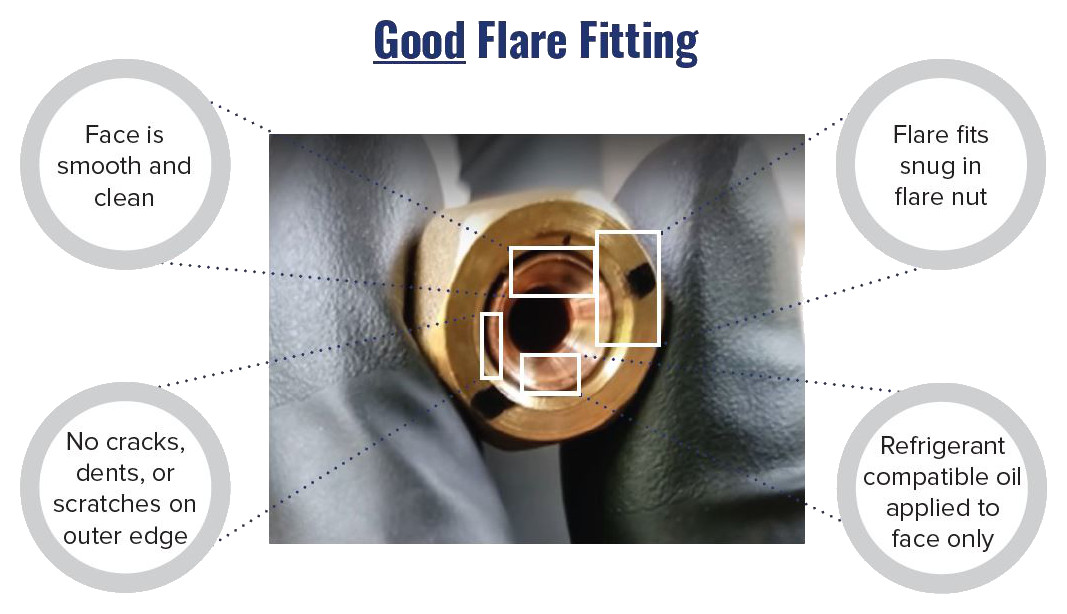
Flare Fitting
Creating properly fitted refrigerant tube connections can reduce maintenance call-backs, making for fewer leaks and better installations. To improve installations, use these procedures and information to know what to look for and do when installing and connecting refrigerant tubing.
Refrigerant Regulation: The Transition to Low GWP Refrigerants
This factsheet explains the regulatory transition to low global warming potential refrigerants and how it may impact heat pump installations.
Refrigerant Regulation: The Transition to Low GWP Refrigerants
The United States Environmental Protection Agency (EPA) is phasing out hydrofluorocarbon (HFC) refrigerants as part of its focus on reducing environmental harm. HFC refrigerants, such as R-410A, are currently widely used. However, they are being phased out because of their high global warming potential (GWP). The Transition to Low GWP Refrigerants factsheet provides important dates and facts to know about the regulatory transition, information on the new refrigerants coming to market for residential heat pumps, and new safety requirements and tools needed to handle the new refrigerants.
NYS Clean Heat QA Scoring
We provide resources to help contractors achieve high scores on their NYS Clean Heat QA/QC field assessments.
NYSCH QA Scoring
The NYS Clean Heat QAQC field assessments ensure the high-quality installation of program-incentivized air source heat pumps, which leads to optimized energy efficiency, greater comfort, lower operating and maintenance costs, and longer equipment lifespans. Installations that can fulfill all items of the NYS Clean Heat field-assessment checklist support a positive public perception of heat pump technology, higher adoption rates of clean heating technologies, and in turn more business for contractors.
Find sizing and design training opportunities.
Clean Heat Connect hosts live and on-demand sizing and design classes from leaders in New York’s residential heat pump market.
Cold-Climate Air Source Heat Pump – Installation Refreshers Guide Series
This short video series demonstrates the installation of a cold-climate air source heat pump. Quality installation is critical for good performance and happy customers. These short videos (2-5 minutes each) are easily watchable on phones, tablets, or laptops. Each video is a concise refresher of a key step in heat pump installation.
These videos are not a substitute for manufacturer training, always refer to manufacturer instructions.
Clean Heat Connect Short Video Series – Installation Topics
Flare Fitting
Flare Fitting — Key Takeaways
- Creating a flare connection is a simple technical process that can be done quickly and will result in a seamless connection if the correct steps are followed.
- Check the installation manual for manufacturer recommended torque and flare dimensions that vary based on the diameter of tubing.
- Purchase and use high-quality tools you are comfortable with. There is wide quality variance on flaring tools and torque wrenches. Look for tools that provider user feedback when the correct pressure has been applied.
- Continuously inspect the flare throughout the process for defects in the copper or shape of the flare. At any point, the flare can be cut, and the process restarted to ensure a high-quality flare connection.
- Apply refrigerant oil that is compatible with the refrigerant being used to the face of the flare nut only. Do not apply lubrication to the threads of the flare nut; doing so will lower the friction and the proper torque will not be achievable.
- Use a flaring tool and torque wrench that provide feedback to avoid over-tightening and damaging the copper.
- Before insulating the lines, run nitrogen through the system and perform a leak test.
- Completely cover the refrigerant line with insulation and seal the section to the atmosphere to protect from moisture infiltration which will condensate on the refrigerant line.
Sizing, Design, and Product Selection
Sizing, Design, and Product Selection — Key Takeaways
- Manual J is the industry standard for accurately sizing a heat pump system.
- Trust your Manual J — there is no need to oversize a heat pump system, especially when the house is properly insulated.
- Pick a heat pumps that has enough capacity at the heating design temperature to cover the load. It’s not enough to look at the nominal capacity because heat pumps lose capacity as it gets colder — and some more than others.
- Customers are regularly reporting increased savings and comfort, valuable feedback that can help you sell more units.
- Ask your customers what their needs are — there are a variety of heat pumps that can be mixed and matched to meet your customer’s needs.
Installation Successes Series
Explore our short videos below to hear from two respected installers, Hal Smith (Halco) and Terry Moag (The Radiant Store). They’ll discuss keys to their success and the importance of your customer’s happiness.
Solving Comfort Problems in an Aging Housing Stock
In this Clean Heat Connect video, Hal and Terry explain why cold-climate heat pumps help them successfully solve the comfort problems that contractors typically encounter when working in older homes.
A Customer Service Mentality from Start to Finish
In this Clean Heat Connect video, Hal and Terry explain how paying attention to customer service details, from the start of a project through to the finish, helps to guarantee a successful heat pump installation and a satisfied long term customer.
New Customers by Word of Mouth
In this Clean Heat Connect video, Hal and Terry explain how their commitment to successful heat pump installations and customer experiences has allowed them to grow their businesses organically by generating high numbers of referrals.
Success Starts with Your Staff
In this Clean Heat Connect video, Hal and Terry explain why investing in proper staff training, such as taking advantage of NYSERDA’s On-the-Job Training Program, is the best way to guarantee success at the project site and success as a business.
Installation Challenges Series
All installers face installation challenges from time to time. Explore our short videos below from two respected installers, Hal Smith (Halco) and Terry Moag (The Radiant Store), addressing some of the common challenges they face and how they overcome them.
Build Trust to Overcome the Rising Cost of Doing Business
In this video, Hal shares his experience navigating the rising costs of doing business as a heat pump installer, with an emphasis on the importance of building trust with his customers.
Avoiding Improper Connection Points and Refrigerant Leaks
In this video, Hal and Terry discuss how they overcome the common challenge of refrigerant leaks by staying up to date on technology changes and training their staff on proper connection point installations, along with the business case for doing so.
Mis-Wired Low Voltage Branch Box Wiring
In this video, Hal and Terry discuss how they overcome the common challenge of mis-wired low voltage branch boxes by training their staff on proper low voltage wiring and the business case for doing so.
Ensure Properly Mounted Outdoor Units
In this video, Hal and Terry describe their approaches to properly mounting outdoor condenser units in order to avoid customer frustration and ensure the systems they install function as intended.
Overcoming Unit Sizing Challenges
In this video, Hal and Terry describe the common challenges associated with properly sizing heat pump systems and their strategies for overcoming these challenges.
Explore Other Top Resources
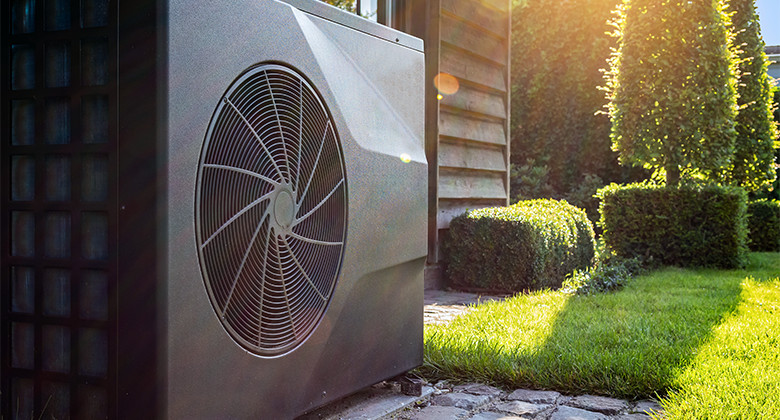
Sizing & Design Materials
Resources on sizing for cold-climates, weatherization, zoning, split systems, ducted systems, electrical services, and more.

Sales & Marketing Materials
Industry tools for project pricing and available tax credits, along with resources for your customers designed to help close deals.
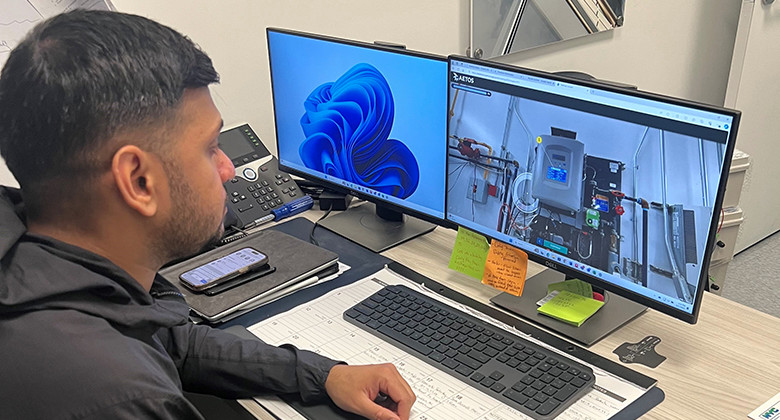
Clean Heat Training
These courses are designed to help contractors optimize their heat pump business within the NYS Clean Heat program opportunity.
